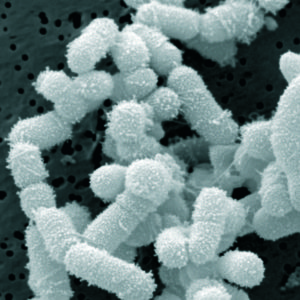 The following is a really nice article about endocrine disruptors (chemicals that can interfere with the body's hormonal system). Journalist Hillary Brueck writes about where they are found (all around us!), some of the many negative health effects, and about NYU physician and researcher Dr. Leonardo Trasande and his new book: "Sicker, Fatter, Poorer: The Urgent Threat of Hormone-Disrupting Chemicals to Our Health and Future ... and What We Can Do About It." Also, some things we can do to lower our exposure to endocrine disruptors.
The following is a really nice article about endocrine disruptors (chemicals that can interfere with the body's hormonal system). Journalist Hillary Brueck writes about where they are found (all around us!), some of the many negative health effects, and about NYU physician and researcher Dr. Leonardo Trasande and his new book: "Sicker, Fatter, Poorer: The Urgent Threat of Hormone-Disrupting Chemicals to Our Health and Future ... and What We Can Do About It." Also, some things we can do to lower our exposure to endocrine disruptors.
By the way, once again Europe is ahead of the US in dealing with this problem. Excerpts from Business Insider: A toxic-chemicals expert is sounding the alarm about 4 cancer-linked chemicals that could be making us sicker and fatter
Through the course of a single day, your hands, mouth, and body come in contact with countless pieces of paper, plastic, fabric, and furniture. You probably don't think about the chemicals these substances might harbor, or consider that they have a drug-like effect on health. But some do. They can make metabolisms slow down, subtly lower IQs, contribute to ADHD in children, and mess with sperm counts in men.
They're called "endocrine disruptors," and they're around us all the time. The chemicals change how our bodies work by shifting the way hormones operate, according to Leo Trasande, a pediatrician and public-health researcher at NYU Langone Health. "Hormones are the basic signaling molecules in our body that take on so many actions for practically every organ system," Trasande told Business Insider. "And endocrine disruptors are synthetic chemicals that scramble those signals, contributing to disease and disability."
In his new book, "Sicker, Fatter, Poorer: The Urgent Threat of Hormone-Disrupting Chemicals to Our Health and Future ... and What We Can Do About It," Trasande lays out the four big categories of endocrine disruptors he's most concerned about, based on evidence from scientific studies and observations in his patients. They are: Bisphenols, like BPA, which are often found in the linings of aluminum-canned food and drinks and on cash-register receipts. Brominated flame retardants that are in some carpets, furniture, and clothing. Synthetic pesticides on food. "Plasticizer chemicals" called phthalates that show up in plastic food packaging, lotions, and cosmetics. ...continue reading "New Book Warning Us About Endocrine Disruptors"

 Bug bombs don't work in reducing cockroach infestations. At all.
Bug bombs don't work in reducing cockroach infestations. At all.  Once again a study found benefits from exercise - specifically that regular exercise is better for the brain and for thinking skills (for "executive function").
Once again a study found benefits from exercise - specifically that regular exercise is better for the brain and for thinking skills (for "executive function").  Does the pesticide glyphosate cause cancer or not? The latest in the controversy surrounding glyphosate (in Roundup), which is the most commonly used herbicide (weed-killer) in the world, is a
Does the pesticide glyphosate cause cancer or not? The latest in the controversy surrounding glyphosate (in Roundup), which is the most commonly used herbicide (weed-killer) in the world, is a  How many times have you heard to eat lots of fruits, vegetables, whole grains, nuts, legumes (beans), and seeds? Study after study finds that eating a diet rich in these foods is linked to all sorts of health benefits. A big reason is that they have lots of fiber - which feeds beneficial microbes in our gut. A recently published review of studies in the prestigious journal Lancet examined studies done over the past 40 years and found numerous health benefits.
How many times have you heard to eat lots of fruits, vegetables, whole grains, nuts, legumes (beans), and seeds? Study after study finds that eating a diet rich in these foods is linked to all sorts of health benefits. A big reason is that they have lots of fiber - which feeds beneficial microbes in our gut. A recently published review of studies in the prestigious journal Lancet examined studies done over the past 40 years and found numerous health benefits. What can the amazing beneficial bacteria Lactobacilus sakei treat? We know it can treat
What can the amazing beneficial bacteria Lactobacilus sakei treat? We know it can treat  Did you know that some other countries have stricter laws on food additives, drugs, and pesticides than the US? This is especially true with the European countries. It is especially aggravating to read that manufacturers sell foods with one set of ingredients in the US and a better set of ingredients in Europe. (Could it be because the FDA has such nice cozy relationships with Big Ag and lobbyists representing big chemical companies?) So... what can the ordinary person do? Read labels carefully. And try to buy as much organic food as possible, or buy from local farmers where you can find out how they are growing crops or raising animals.
Did you know that some other countries have stricter laws on food additives, drugs, and pesticides than the US? This is especially true with the European countries. It is especially aggravating to read that manufacturers sell foods with one set of ingredients in the US and a better set of ingredients in Europe. (Could it be because the FDA has such nice cozy relationships with Big Ag and lobbyists representing big chemical companies?) So... what can the ordinary person do? Read labels carefully. And try to buy as much organic food as possible, or buy from local farmers where you can find out how they are growing crops or raising animals. Are we heading toward a time in the not so distant future when all men are infertile? (Due to exposure to all the endocrine disruptors around us.)
Are we heading toward a time in the not so distant future when all men are infertile? (Due to exposure to all the endocrine disruptors around us.)  Type 2 Diabetes May Be Reversed With Weight Loss
Type 2 Diabetes May Be Reversed With Weight Loss More and more evidence is accumulating that certain diets are anti-inflammatory. Especially beneficial are diets rich in fruits, vegetables, seeds, nuts, legumes (beans), and whole grains - which also have a lot of fiber. This is exciting research because chronic low-grade inflammation is linked to a number of chronic diseases (heart disease, cancer, etc.).
More and more evidence is accumulating that certain diets are anti-inflammatory. Especially beneficial are diets rich in fruits, vegetables, seeds, nuts, legumes (beans), and whole grains - which also have a lot of fiber. This is exciting research because chronic low-grade inflammation is linked to a number of chronic diseases (heart disease, cancer, etc.). Dental floss coated with a "non-stick coating" has long been a concern of mine. Do the Teflon-like chemicals get into the person when a person is flossing teeth?
Dental floss coated with a "non-stick coating" has long been a concern of mine. Do the Teflon-like chemicals get into the person when a person is flossing teeth?